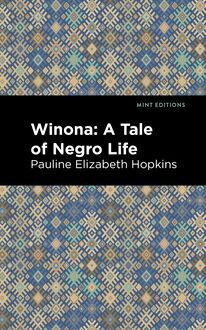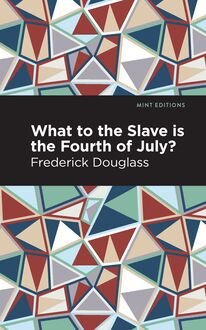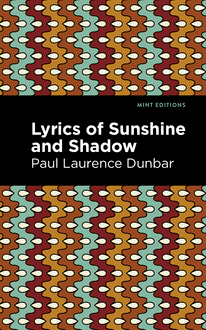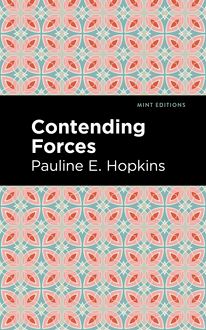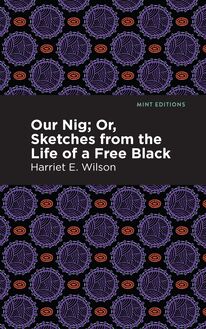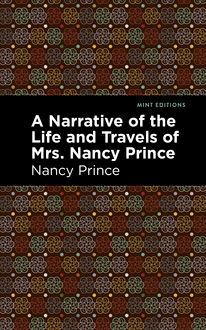-
 Univers
Univers
-
 Ebooks
Ebooks
-
 Livres audio
Livres audio
-
 Presse
Presse
-
 Podcasts
Podcasts
-
 BD
BD
-
 Documents
Documents
-
- Cours
- Révisions
- Ressources pédagogiques
- Sciences de l’éducation
- Manuels scolaires
- Langues
- Travaux de classe
- Annales de BEP
- Etudes supérieures
- Maternelle et primaire
- Fiches de lecture
- Orientation scolaire
- Méthodologie
- Corrigés de devoir
- Annales d’examens et concours
- Annales du bac
- Annales du brevet
- Rapports de stage
La lecture à portée de main
Vous pourrez modifier la taille du texte de cet ouvrage
Découvre YouScribe en t'inscrivant gratuitement
Je m'inscrisDécouvre YouScribe en t'inscrivant gratuitement
Je m'inscrisEn savoir plus
Vous pourrez modifier la taille du texte de cet ouvrage
En savoir plus

Description
The Colored Girl Beautiful (1916) is an etiquette book by Emma Azalia Hackley. Published toward the end of her life, The Colored Girl Beautiful draws from decades of experience as an activist and educator to provide a template for young African American girls looking to lead independent and productive lives. The work was compiled from a series of talks given by the author at boarding schools for African American girls around the country. “The beautiful part about the colored race in America, is the future. As a mixed race we are undeveloped. We may become whatever we WILL to become.” Musing on subjects as diverse as race, history, religion, beauty, and romance, Emma Azalia Hackley offers her vision of a brighter future for young African American women. Her words are assuring, powerful, kind, and honest. Her goal is to foster confidence and strength, in order that her readers might succeed in a world which all too often threatens their continued existence. With such lessons, she hopes to grow leaders who will one day change the world. With a beautifully designed cover and professionally typeset manuscript, this edition of Emma Azalia Hackley’s The Colored Girl Beautiful is a classic of African American literature reimagined for modern readers.
Sujets
Informations
| Publié par | Mint Editions |
| Date de parution | 16 novembre 2021 |
| Nombre de lectures | 0 |
| EAN13 | 9781513221526 |
| Langue | English |
| Poids de l'ouvrage | 1 Mo |
Informations légales : prix de location à la page 0,0300€. Cette information est donnée uniquement à titre indicatif conformément à la législation en vigueur.
Extrait
The Colored Girl Beautiful
Emma Azalia Hackley
The Colored Girl Beautiful was first published in 1916.
This edition published by Mint Editions 2021.
ISBN 9781513223025 | E-ISBN 9781513221526
Published by Mint Editions®
minteditionbooks.com
Publishing Director: Jennifer Newens
Design & Production: Rachel Lopez Metzger
Project Manager: Micaela Clark
Typesetting: Westchester Publishing Services
C ONTENTS F OREWORD T HE F UTURE T HE C OLORED C HILD B EAUTIFUL T HE C OLORED G IRL B EAUTIFUL L AW OF A TTRACTION— V IBRATIONS L OVE P ERSONAL A PPEARANCE D EEP B REATHING O RIGINALITY Y OUTH AND M ATURITY S ELF C ONTROL H ER R ELATIONSHIP WITH M EN T HE R ELIGION OF THE C OLORED G IRL B EAUTIFUL T HE S CHOOL OF THE C OLORED G IRL B EAUTIFUL T HE H OME OF THE C OLORED G IRL B EAUTIFUL T HE C OLORED W ORKING G IRL B EAUTIFUL T HE C OLORED W OMAN B EAUTIFUL T HE C OLORED W IFE B EAUTIFUL T HE C OLORED M OTHER B EAUTIFUL
F OREWORD
T his volume has been compiled from talks given to girls in colored boarding schools. The first talk was given at the Tuskegee Institute at the request of the Dean of the Girls’ Department.
It was an impromptu talk after an hour’s notice. Just before the Dean closed the door to leave me alone with the girls, I repeated my question, “What shall I talk about?” The reply was, “Tell them anything you think they should know. They will believe an experienced woman like you who travels and knows the world and life.”
As I looked at the sea of faces, “wanting to know,” and as I thought of all they had to learn, the vastness of all of it almost overpowered me. “May I sit down, girls? Now, what shall we talk about that is interesting to everyone of you?”
“Would you like to talk about Love—real Love?” “Yes, yes,” came the answer. “Would you like to talk about Beauty—real Beauty?” “Yes! Yes!” they answered and the chairs were pulled forward. For forty minutes we had a heart to heart talk. The dean and teachers had perhaps told the girls the same words, but the message seemed to come more directly to them from one who had daily contact with the great, busy world.
The talks were very informal and personal and as the girls asked questions the thought came to me to jot down the points, that similar talks might be given to the girls in other schools. Then came the request, “You come so seldom, can you print the talks?” Much of the talks could not be printed because many of the questions and answers were personal.
If I had a daughter I would desire that she should know these things and more, that she might be a beacon light to her home and to the race. As I have not been blessed with a daughter, I send these thoughts to the daughters of other colored women, hoping that among them there is some new thought worthy of a racial “Amen.”
E. A ZALIA H ACKLEY
Chicago, Ill., August, 1916
T HE F UTURE
T he beautiful part about the colored race in America, is the future. As a mixed race we are undeveloped. We may become whatever we W ILL to become.
This race is a growing people. The future is veiled but it may reveal some strange things to the world. What opportunities there are for leadership! If there were only some ways to “squelch” the fakers and arouse the dreamers!
If each would only think out a different plan for race advancement, there would always be followers. Some would be attracted in one way and others reached in another way, and so carry lines of thought.
The gardener is aiming towards better vegetation. Scrubs and dwarfs are sacrificed totally to produce a more perfect plant.
The horse breeder, any animal breeder, the bird fancier, all aim to get a better breed of stock in each generation.
The cry of the hour is “A better breed of babies.” As it takes several generations to breed a prize winner, it is time for the colored race to look into these things and prepare for the future colored child, handicapped as it will be. Nature needs assistance in this.
Attractiveness in appearance is a strong factor in success. A pleasing, even, charming personal appearance may be cultivated.
The mind—the gray matter—either fills the body with life or beauty, or it destroys life and beauty, according to the concentration of thought, and resulting habits.
If one were to ask, “Can a leopard change its spots,” the reply must always be, “No.” But if one were to ask if the Negro could change his appearance, through himself, his own will power, the answer would be, “Yes,” because the Negro has a thinking brain. He may become as attractive as he wills to become.
As his taste and ideas of beauty conform to the accepted, so will he grow like these ideals and standards.
T HE C OLORED C HILD B EAUTIFUL
E very baby is beautiful to its mother. Every colored baby is generally, only cunning or cute to many of the white race who have their own ideal of baby beauty, which depends mainly upon a white skin.
Beauty is a matter of personal opinion. To a savage African, a baby with a black skin and flat nose is the ideal.
To a Chinese, a plump, yellow, slant eyed baby satisfies.
To the Esquimaux, the round faced, small eyed, black haired little one is the admired type.
A child should be taught to love and be proud of its race and to know the good points of the race.
Colored babies are born with rare physical gifts. First: They are born with the most beautiful eyes in the world. Unlike foreign children who come to this country, they seldom have sore eyes. I have visited about six hundred colored schools and have yet to see a sore eyed colored child.
The obligation of a gift is the preservation and cultivation of this gift. Little colored children should be taught to keep their eyes open and bright with intelligence and clear with good health, because the eyes are the windows of the soul. Their eyes should look straight into the eyes of others with their souls shining through. Their eyes must be kind eyes, listening eyes, observant eyes, thoughtful eyes, and remembering eyes.
Second: Colored people are credited with having the finest teeth in the world. The obligation of this gift is cleanliness and preservation of this attractive gift. A colored child should be taught to deny herself to pay a dentist’s bill.
Third: Colored people have the finest voices in the world. The obligation of this gift is its cultivation, proper care and control of the voice, and to speak in good English.
There are other natural gifts but of them—later on. The greatest gift to the Negro is himself. So much in him is hidden, spiritually, intellectually, psychically and physically, that he is a vast unexplored mine.
All colored babies like all little white babies, excepting in the shades of color, are born about alike, with round or long heads, all with the same soft spot on the crown, and like white babies, are mostly all mouth because they are hungry little animals and use their mouths often.
As the child observes, thinks, and “wills,” the bumps and hollows appear, the features develop and lines grow. Any ugly little baby may develop into a beautiful child. Any beautiful child may grow ugly and coarse.
If babies were born with developed features they would be monstrosities.
“Within each of them is an inward sculptor, Thought, who is a rapid, true workman.”
Colored children should be taught that Thought will improve their good points and will eradicate any objectionable points. They should be taught their good points and their bad points, and should be encouraged to improve their personal appearance, as far as objectionable racial characteristics are concerned.
As the girl grows she should be taught the value of personal appearance as a factor in her life problem and ultimate success.
A little colored girl who wants to be pretty should be taught what “pretty” really is. The old proverb says, “Pretty is as pretty does,” thus recognizing the power of the inward Sculptor Thought, and its controlling and cultivating forces.
At an early age the child should be given subjects to think about. She should be taught to see the beautiful in Nature and Art that the reflection may be seen in her face and in her actions. Ask her if she saw the sun rise this morning or the sun set last night, or if she noticed the moon light, or the grandeur of the low black clouds, or the fleeciness of the soft white clouds; tell her to listen to the language of the birds and insects, and the sighing of the winds through the trees. Tell her to listen to the teeming of the earth and ask where and when the earth smells the sweetest. Teach her to walk and talk with Mother Nature and to recognize her voice in everything, until Nature will appear more, mean more, and teach more. Companionship with flowers and the cultivation of plants is to be recommended, even in the most congested flat life.
The colored child should be taught Negro History that she may be proud of her dark skin. It is a long interesting story way back to the days of Ethiopian glory, for the Negro is the sub-strata of that race. Tell the child how fair races from the North invaded Africa, and until today the present colored race can trace its black blood back to African kings and queens, and its white blood to the kings and queens of the Old World. 1
Let her know that the black man was the author of much of the world’s history, and that Moro, the capital of Ethiopia, was at one time the great seat of learning. She should be taught early in life to read Ancient History, that she may see what the black man has done for the world, that she may have pride in her black blood as well as in her white blood. Tell her the record of the Negro as a soldier, statesman, and explorer. Read to her about the brave part that he played in the war of 1812 and subsequent wars, even in the recent terrible war, he was among the bravest. Help her to make a scrap book that she may pass her knowledge on to others. While authorities in history say that a race once great, can never attain g
-
 Univers
Univers
-
 Ebooks
Ebooks
-
 Livres audio
Livres audio
-
 Presse
Presse
-
 Podcasts
Podcasts
-
 BD
BD
-
 Documents
Documents
-
Jeunesse
-
Littérature
-
Ressources professionnelles
-
Santé et bien-être
-
Savoirs
-
Education
-
Loisirs et hobbies
-
Art, musique et cinéma
-
Actualité et débat de société
-
Jeunesse
-
Littérature
-
Ressources professionnelles
-
Santé et bien-être
-
Savoirs
-
Education
-
Loisirs et hobbies
-
Art, musique et cinéma
-
Actualité et débat de société
-
Actualités
-
Lifestyle
-
Presse jeunesse
-
Presse professionnelle
-
Pratique
-
Presse sportive
-
Presse internationale
-
Culture & Médias
-
Action et Aventures
-
Science-fiction et Fantasy
-
Société
-
Jeunesse
-
Littérature
-
Ressources professionnelles
-
Santé et bien-être
-
Savoirs
-
Education
-
Loisirs et hobbies
-
Art, musique et cinéma
-
Actualité et débat de société
- Cours
- Révisions
- Ressources pédagogiques
- Sciences de l’éducation
- Manuels scolaires
- Langues
- Travaux de classe
- Annales de BEP
- Etudes supérieures
- Maternelle et primaire
- Fiches de lecture
- Orientation scolaire
- Méthodologie
- Corrigés de devoir
- Annales d’examens et concours
- Annales du bac
- Annales du brevet
- Rapports de stage

